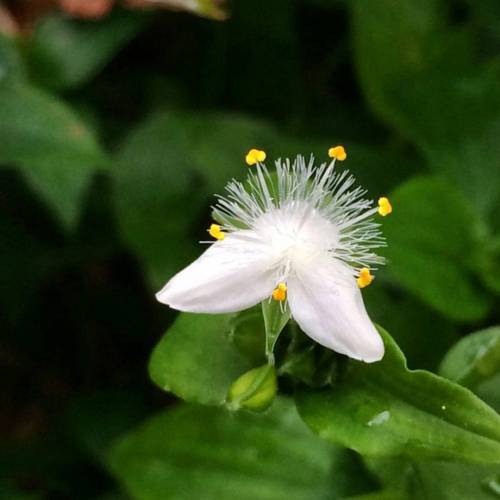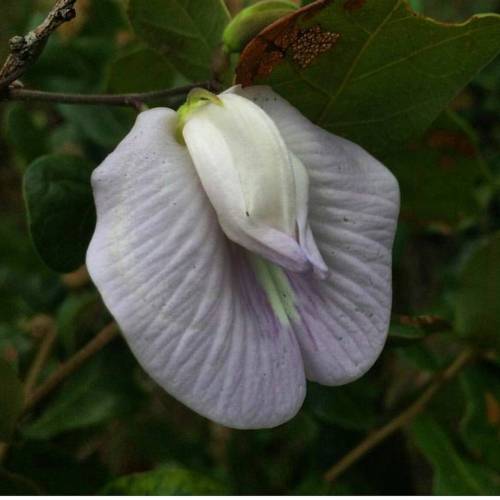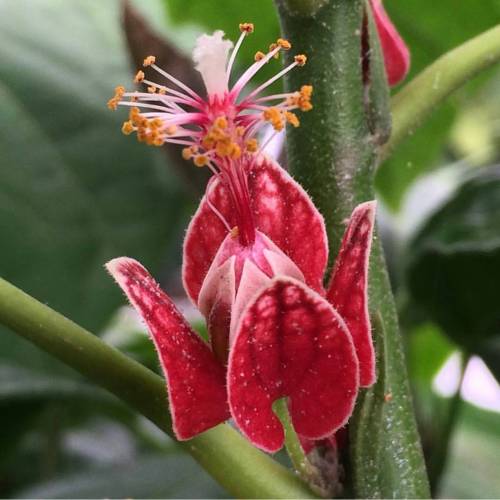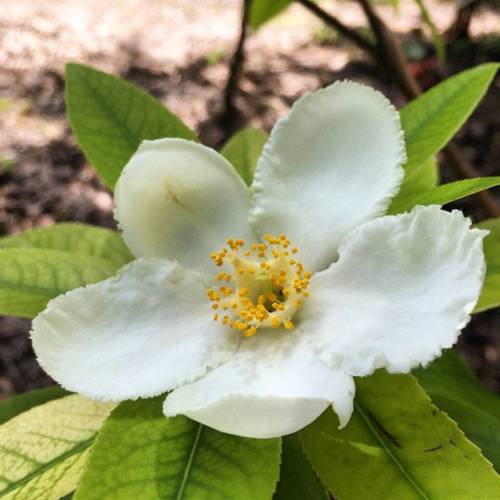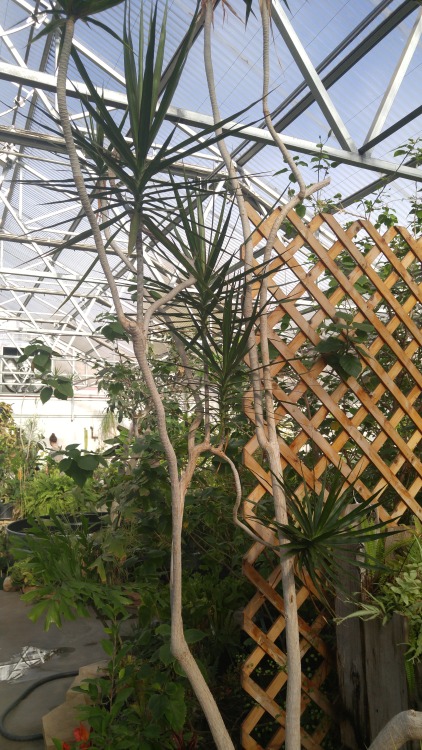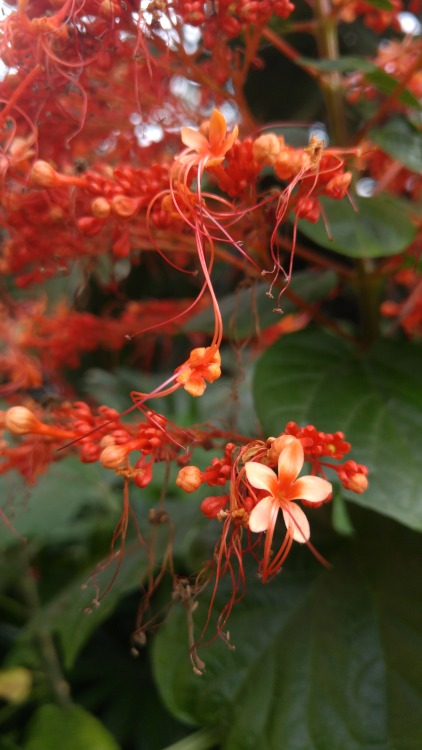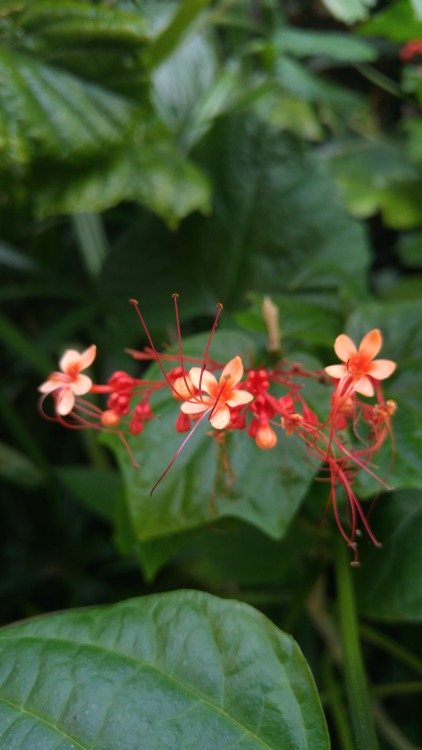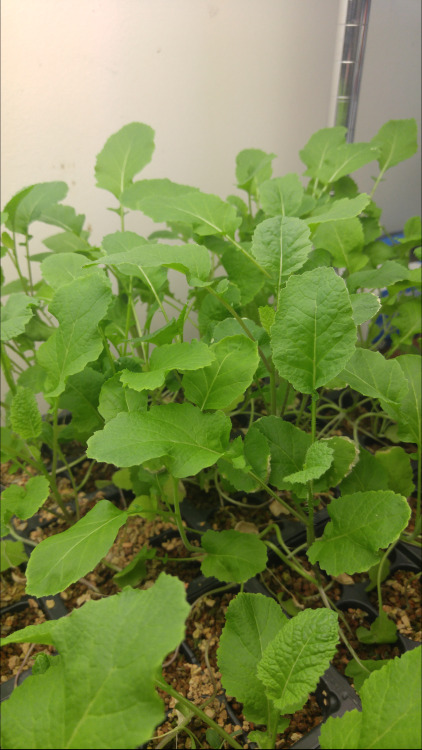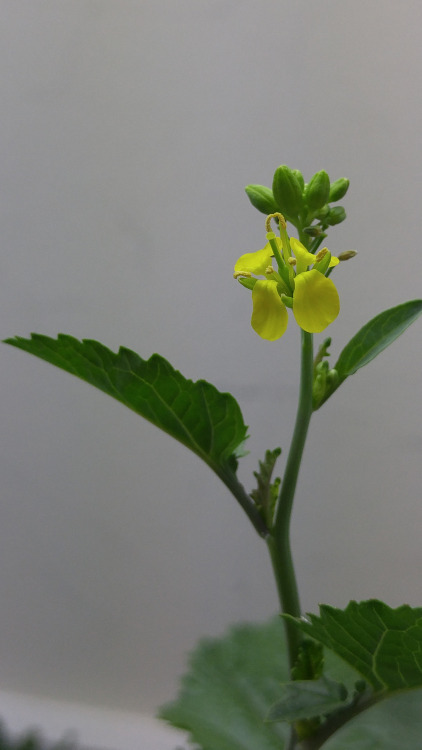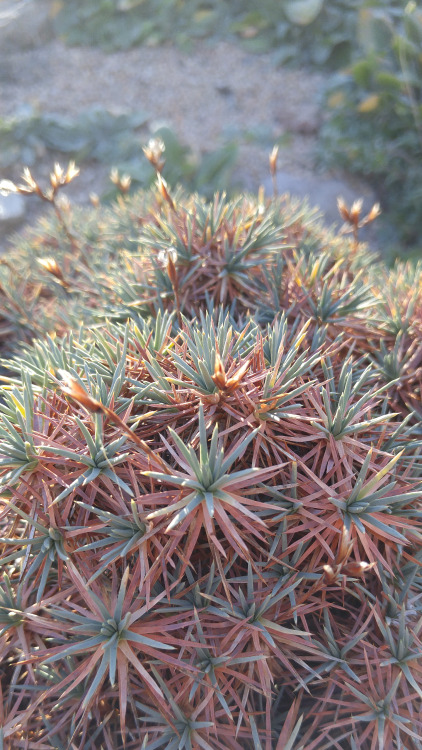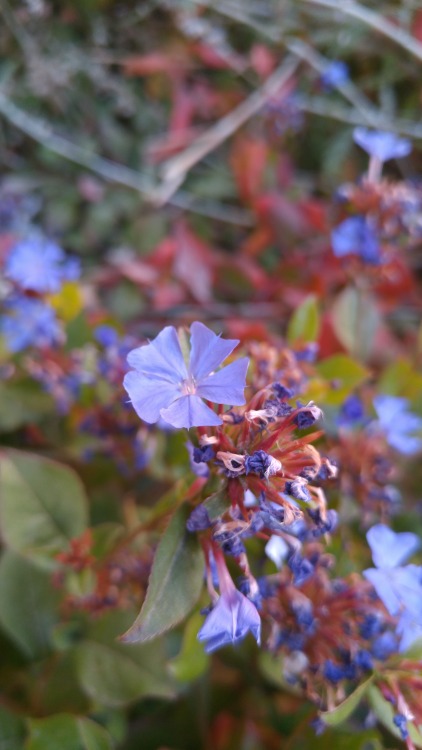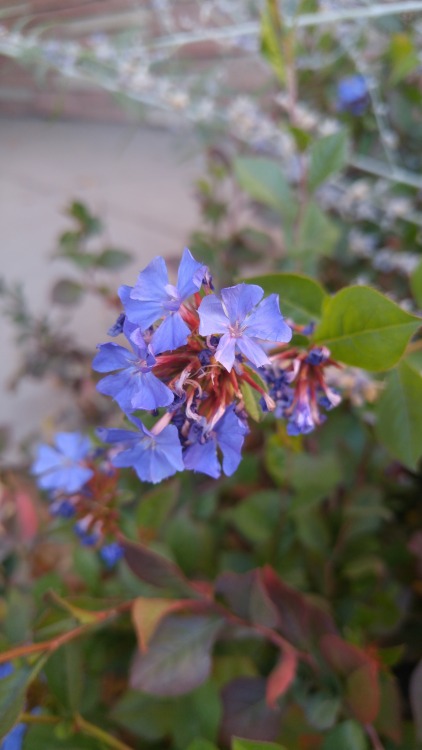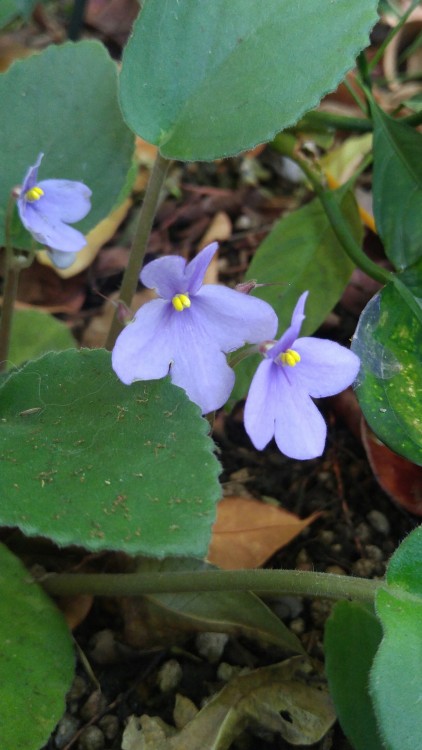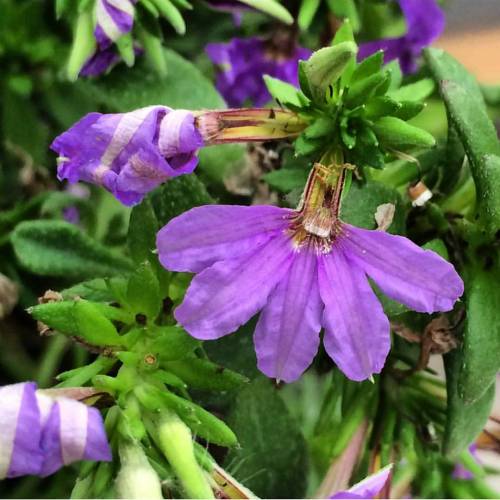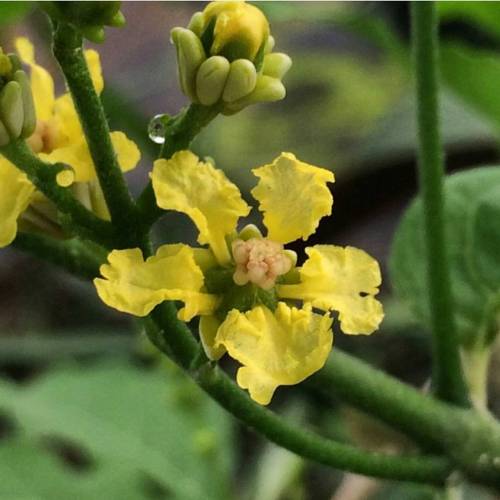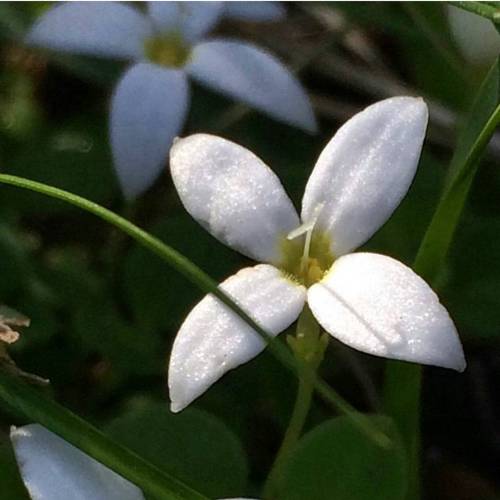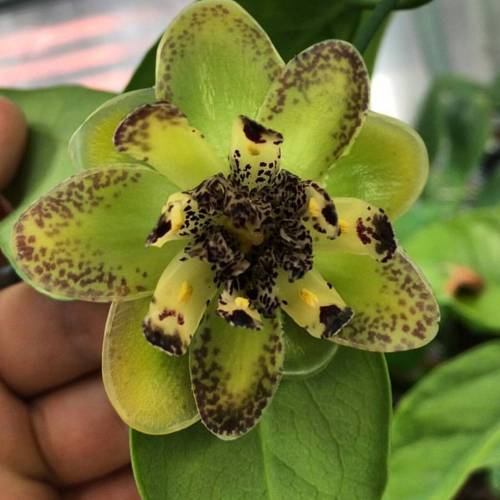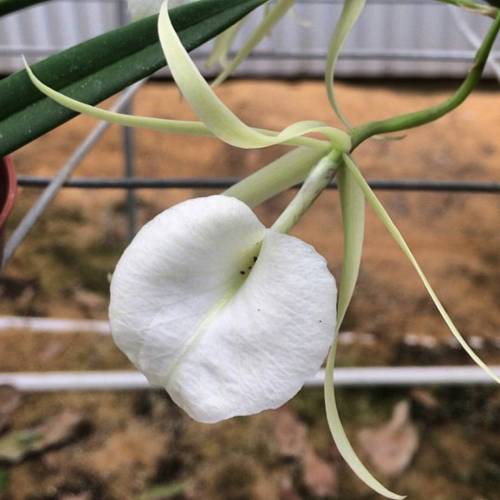#dailyplantfacts
Tradescantia fluminensis is in the family Commelinaceae. Commonly known as small leaf tradescantia or inch plant, it is native to South America, but is commonly cultivated around the world. The specific epithet, fluminensis, means “from the river” in Latin, referring to this plants native habitat near the January River in Brazil! Follow for more plant facts and photos! #dailyplantfacts #plants #flowers #botany #spiderwort
Post link
Centrosema arenicola is in the family Fabaceae. The flowers of this herbaceous vine are resupinate, meaning they twist upside down during development. Commonly known as Pineland Butterfly Pea, it is endemic to the pine sandhills and scrubs of central Florida. This plant is very rare and hard to find, and is listed as an endangered species due to its limited range.
Follow for more plant facts and photos! #dailyplantfacts #botany #plants #flowers
Post link
Pavonia strictiflora is in the family Malvaceae. Native to parts of South America, it is sold worldwide as an ornamental for tropical gardens and greenhouses. The bright red bracts surround the actual petals which remain closed around the stamen and pistil. The flowers emerge directly from the stem which is known botanically as cauliflory.
Follow for more plant facts and photos! #dailyplantfacts #botany #plants #flowers
Post link
Gordonia lasianthus is in the tea family Theaceae. Commonly known as Loblolly Bay, it is native to to the Southeast United States. This plant is a tree that can grow up to 70 feet tall and is found in acidic and wet areas, including bogs and swamps. This species is also cultivated ornamentally for its white flowers and strong fragrance that attracts many insects. Follow for more plant facts and photos! #dailyplantfacts #plants #flowers #trees #botany
Post link
Zephyranthes atamasco is in the family Amaryllidaceae. This species, and others in this genus are native to the Southeastern United States, and bloom in the spring from underground bulbs. The name of this genus comes from the Greek word “Zephyr”, meaning God of the west wind, which refers to this genus’ distribution in the New World. Follow for more plant facts and photos! #dailyplantfacts #botany #flowers
Post link
Dracaena reflexa var. angustifolia is in the family Asparagaceae. Commonly known as pleomele, it is native to Madagascar and other islands in the Indian Ocean. Pleomele is a woody shrub that can grow over 10 feet tall and is commonly found growing in jungle understories in its native habitat. Outside of its native range, pleomele is found around the world as a very common house plant. Frequently sold as D. marginata, this species has red-edged leaves and a tolerance for indoor cultivation making it an ideal and attractive plant for use inside the home. Pleomele also frequently ranks highly in NASA clean air studies, meaning this species has the ability to filter toxins from the surrounding air.
Post link
Clerodendrum paniculatum is in the family Lamiaceae. Commonly known as pagoda flower, it is native to southeast Asia. Pagoda flower is an evergreen shrub that can grow up to 6 feet tall, and produce a terminal paniculate inflorescence full of crimson flowers. The shape of the inflorescence of this species is the inspiration for the common name of the pagoda flower, and is also the reason it is widely cultivated around the world. Aside from its ornamental use, pagoda flower has a history of medicinal use in its native range where it is commonly used to make a tea to induce vomiting.
Post link
Brassica juncea is in the cabbage family Brassicaceae. Commonly known as mustard greens, it is used widely in cuisine across the world, with an emphasis of use in middle eastern and Asian dishes. The leaves, stems and seeds of mustard are edible; the leaves and stems are usually sauteed while the seeds are pressed to produce canola oil and brown mustard. Aside from its culinary uses, mustard also has potential for use in phytoremediation, and has been shown to accumulate high levels of heavy metals including lead.
Post link
Acantholimon caesareum is in the family Plumbaginaceae. Native to the Mediterranean and eastern Europe, this species, like others in its genus, form dense basal rosettes of small spiny leaves. The linear leaves have a bluish-green tint and are more densely clustered compared to other related species. In its native subalpine habitat, small 5-petaled pink flowers bloom from terminal racemes in the spring and early summer.
Post link
Ceratostigma plumbaginoides is in the family Plumbaginaceae. Commonly known as leadwort, or plumbago, it is native to temperate regions of Eurasia. Leadwort is an herbaceous perennial that grows up to 3 feet tall and produces terminal clusters of brilliant blue flowers. Noted for its long bloom time from the middle of summer to the beginning of winter, this species is also prized for its attractive foliage, which becomes a deep bronze or maroon as winter approaches. Because of the contrasting colors of the foliage and flowers, it is commonly cultivated for use in the landscape.
Post link
Saintpaulia ionantha subsp. rupicola is in the family Gesneriaceae. Commonly known as African violet, it is native to the cloud forests of eastern Africa, including Tanzania and Kenya. African violets are small herbs that only grow up to 1 foot tall, producing a basal rosette of velvet heart-shaped leaves and terminal panicles of blue to violet flowers. African violets are among of the most popular houseplants due to their ease of cultivation and tolerance of low light conditions. Many varieties have been bred by horticulturalists to exhibit a range of flower colors and shapes. Despite their popularity in the gardening world, native populations of African violets are at risk because of habitat loss from agricultural development.
Post link
Scaevola is a genus of plants in the family Goodeniaceae. They are commonly known as Fan Flowers for their remarkable floral morphology. Out of all of the genera in the family, these plants are the only species to be naturally found outside of Australia. Many species in this genus have been cultivated for the ornamental market and are readily available around the world.
Follow for more plant facts and photos! #dailyplantfacts #plants #botany #flowers
Post link
Fremontodendron californicum is in the Hibiscus family, Malvaceae. Commonly known as the flannel bush, this species has rough, hairy leaves that may irritate the skin. There are only 2 species in this genus, and they both are found in the Southwestern United States and Northern Mexico. Follow for more plant facts and photos! #uf #growbotany #plantscience #dailyplantfacts #flannelbush #fremontodendron #plants #flowers #botany #sanfrancisco #california
Post link
Bunchosia argentea is in the family Malpighiaceae. Commonly known as Peanut Butter Fruit, it is native to South America including Venezuela and Colombia. The fruits of this plant can be eaten raw, or used in jams and jellies, and have the smell and taste of peanut butter! Follow for more plant facts and photos! #flowers #botany #dailyplantfacts
Post link
Medicago lupulina is in the pea family Fabaceae. Commonly known as black medick, it is extremely widespread across the United States often appearing in lawns and disturbed sites. This species easily grows in poor soils due to a mutualistic relationship with nitrogen-fixing rhizobia bacteria. Over time, these soils may be remediated due to the presence of this species and other legumes! Follow for more plant facts and photos! #dailyplantfacts #botany #plants #flowers #medicago
Post link
Clarkia is a genus in the family Onagraceae. Most species of Clarkia are native to Western North America, with only one species being found in South America. Certain species have been cultivated as ornamentals for their vibrant, multi-colored petals. Follow for more plant facts and photos! #uf #growbotany #plantscience #dailyplantfacts #plants #botany #sanfrancisco #sfbotanicalgardens
Post link
Brugmansia is in the Tomato family, Solanaceae. They are closely related to another genus, Datura, and both share the same common name of “Angels Trumpet”. Brugmansia is extremely poisonous, and can cause severe hallucinations and violent convulsions! Parts of the plant have been used by South American tribes for both divination rituals and black magic! Follow for more plant facts and photos! #growbotany #plantscience #dailyplantfacts #brugmansia #solanaceae #tomato #plants #botany #datura #angelstrumpet #wickedllants #poison #hallucinations #flowers #gardens #ucbotanicalgardens
Post link
Houstonia procumbens is in the coffee family Rubiaceae. Although plants in this genus are commonly known as Bluets, this species is known as Innocence, due to the pure white color of its flowers. This species is native to the Southeast United States, and is a common perennial found in the wild and along roadsides and other disturbed sites! Flow for more plant facts and photos! #dailyplantfacts #plants #flowers #florida #botany
Post link
Bougainvillea arborea is in the family Nyctaginaceae. While many other Bougainvillea species are vines, this species is commonly known as the tree Bougainvillea! The yellow flowers are subtended by beautiful purple bracts, which are modified leaves, not petals. Follow for more plant facts and photos!
#uf #growbotany #plantscience #dailyplantfacts #herbarium #plants #botany #florida
Post link
Austrobaileya scandens is the only species in its genus and the family Austrobaileyaceae. It is only found in the jungles of Queensland, Australia where it grows as a woody vine. Austrobaileya is part of a large group of plants considered basal angiosperms, which split from the rest of the flowering plants early in evolutionary history! Follow for more plant facts and photos! #dailyplantfacts #plants #botany #flowers #austrobaileya
Post link
Grewia occidentalis is in the Grewioideae subfamily of Malvaceae. Originally in the basswood family Tiliaceae, APG III phylogeny has determined many families belong in Malvaceae. This species is commonly known as crossberry, and is native to South Africa. It is commonly grown ornamentally due to its unobtrusive root system and beautiful flowers! Follow for more plant facts and photos! #dailyplantfacts #plants #botany #flowers
Post link
Brassavola nodosa is in the orchid family Orchidaceae. This species is native to Mexico and other parts of Latin America including Venezuela, and Colombia. It is commonly known as Lady of the Night due to the flower’s sweet fragrance that is given off during the evening. Follow for more plant facts and photos! #dailyplantfacts #plants #flowers #botany
Post link
Dombeya burgessiae is in the hibiscus family Malvaceae. Plants in this genus are native to Eastern Africa, including Tanzania, and some species can also be found in Madagascar. This species is also commonly known as Tropical Hydrangea, due to the similarity of the flowers, although they are not closely related. Since hydrangeas generally don’t do well in more tropical climates, many people have planted this species instead for its beautiful inflorescences! Follow for more plant facts and photos! #dailyplantfacts #plants #botany #flowers #florida #dombeya
Post link

